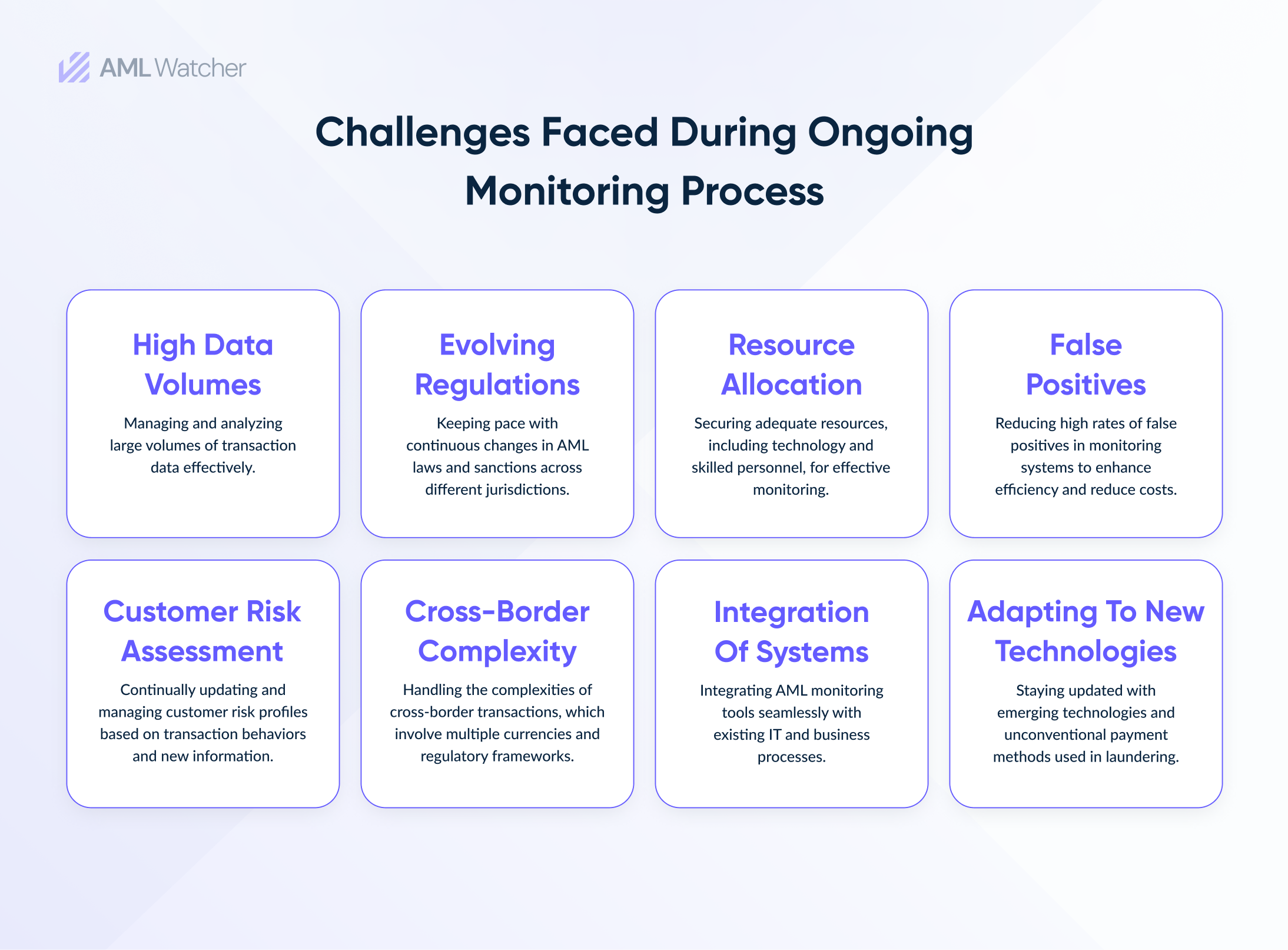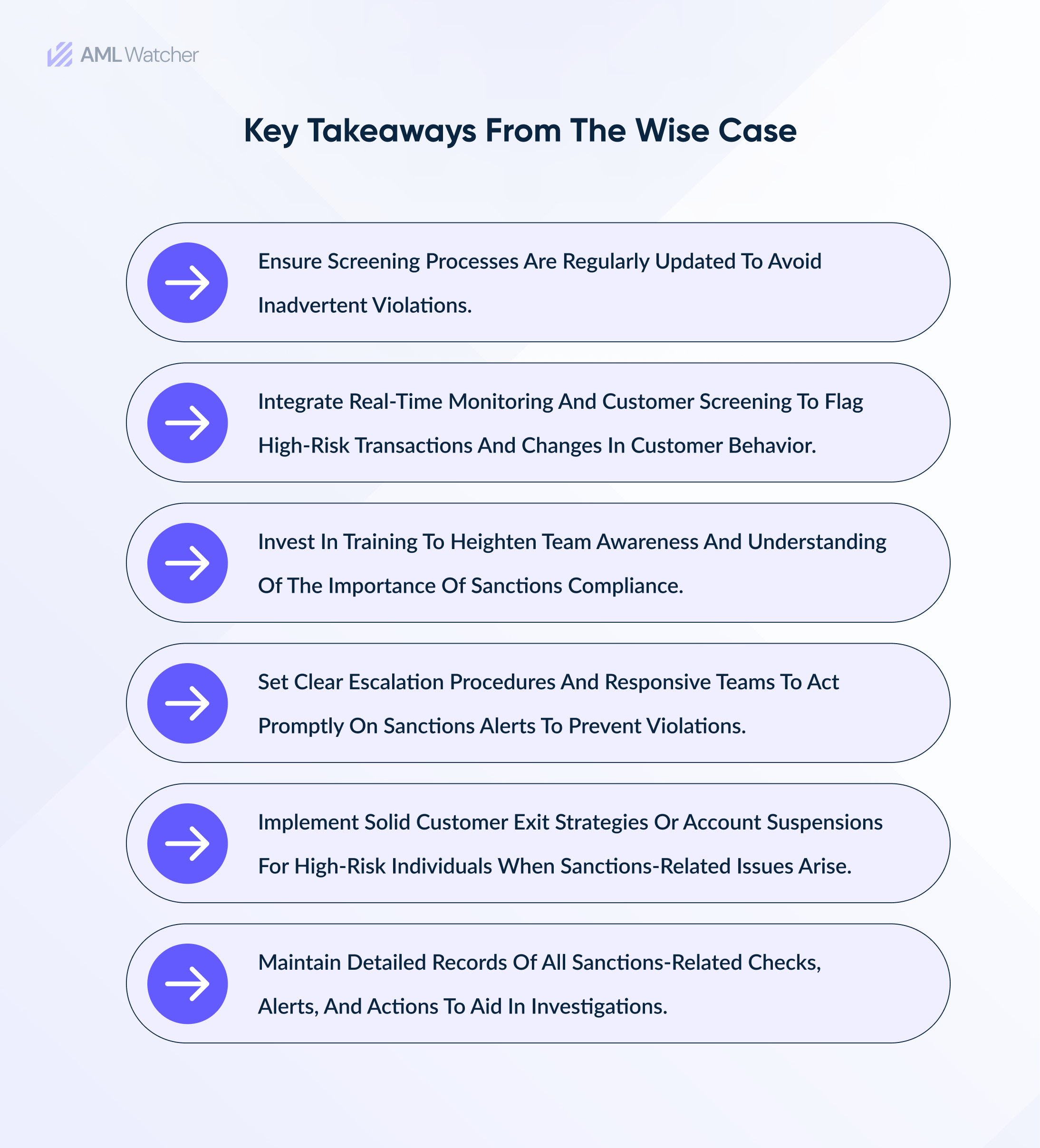
Essentials Of AML Monitoring To Stay Compliant In 2024
In 2023, Microsoft launched its SFI- the Secure Future Initiative, to combat malicious cyber attacks targeting identity verification systems. This program uses enhanced KYC Ongoing Monitoring, to create a solid foundation for secure identity management utilizing AI technology. With the rising threat of cyberattacks, IT giants such as Apple and Microsoft are actively investigating new developments in continuous monitoring for reliable identity security. This ongoing AML monitoring tools consists of frequent identity checking and tracing client activity patterns to highlight and target any inconsistencies.
In this manner, it’s not incorrect to state that,
AML monitoring serves as a framework for proactive risk management for international businesses, and financial institutions; that allows them to take an organized approach to closely evaluate the clients’ activities by constantly searching for patterns and trends that could point to illegal activity.
While there is no doubt that the regulatory framework is constantly unstable, a business may incur significant expenditures if it takes one incorrect step in conducting efficient AML monitoring. This is why companies keep seeking tactics that will end the emergence of money laundering and financial crimes.
Looking for more information regarding real-time monitoring?
Stay with us and read this article to find the detailed significance of regular monitoring in the AML compliance world.
What Does AML Ongoing Monitoring Mean?
The FATF recommendations state that continuous AML monitoring entails a thorough examination of customer activity and finance spending patterns over the complete process of commercial operations. This procedure supports the regular assessment of critical information, including the collection and validation of past financial activity of clients and other relevant details.
Fundamental Parameters Of Ongoing Monitoring
This encompasses the automatic evaluation, improvement, and updating of client’s information to match the latest circumstances while ensuring the data is complete and up to date for KYC/AML measurements.
The continuous monitoring is based on a complex system, covering different components;
Sanctions Lists
Since the lists are frequently updated with entities being added or removed, it’s important to have a system in place to periodically verify these lists to manage any risk on time. Moreover, the preferences of such countries, which would be not on any watch lists or sanctions lists, can also be a serious challenge for the financing of terrorism and money laundering. To prevent your business from engaging in financial misconduct, these countries require ongoing compliance monitoring.
Politically Exposed Persons Lists
A person who regularly deals with business matters may become a PEP through political victory or a new position in a global organization. If a PEP is identified, it must be flagged and examined for improved continuous diligence.
Adverse Media Checking
Regular observation of the portfolio of individual customers’ risk profiles is a necessity to detect variations in their risk profile and safeguard the company from reputational damage. Adverse media screening leads to a reassessment of risk and making better plans to ensure that compliance requirements are set in place.
Ultimate Beneficial Ownership
Companies need to stay in compliance with international AML monitoring rules by finding out ownership changes that may present the riskiest individuals among those likely to harm the enterprise and will enable informed operational decisions. Companies that don’t modify sanction screening protocols run the risk of unknown harm.
Renowned Case Study Of Wise Payments Limited
In 2022, Wise Payments Limited experienced significant AML compliance issues that resulted in a breach involving a sanctioned individual, which prompted a thorough investigation and multiple lessons learned.
The Breach
Wise reported a possible breach of sanctions and AML monitoring rules when a designated person used a debit card to take £250 from a Wise business account despite having been sanctioned the day before. This incident highlighted the flawed AML and sanctions compliance architecture of Wise.
The ramifications of this case extend beyond Wise to encompass businesses navigating the tricky world of AML sanctions compliance.
This case clearly illustrates the necessity of timely and accurate screening, as well as the importance of promptly responding to alerts, and strong policies covering all customer transactions and encompassing all money instructions. This helps to reduce risks imposed by the sanctions efficiently.
Let’s move forward and get an idea of conducting real-time AML monitoring systematically.
How Does The Ongoing Monitoring Process Operate?
The ongoing monitoring process ensures that your data is updated every time the lists of sanctions are altered, funds are being moved, regulatory lists are updated and transactions are taking place. This empowers industry players to mitigate possible risks that come up after a client joins and also helps enhance the detection of any initial risk factors that were overlooked during the Onboarding process. AML monitoring systems continue to ensure that there is no money laundering or other criminal activities in every business link.
Risk Assessment
Financial institutions are required to periodically evaluate their exposure to money laundering and terrorist financing threats and to establish suitable controls in response to those findings. In Jan 2024, the Solicitors Regulation Authority highlighted the significance of the firm-wide risk assessment within its AML guide, encouraging financial institutions to process AML actions in a risk-based procedure.
Integrating Internal Controls
Following the risk analysis threshold, organizations should implement security measures that shall monitor and prevent misuse of security. In real-time this occurs through the use of measures such as identity verification to authenticate customer information before transaction processing, policies on the line of discrete transactions monitoring, and reporting any suspicious pattern.
Customer Due Diligence
Banks, financial institutions, and other businesses must ensure that they verify the identity of their customers and detect unusual behavior that may indicate a risk of money laundering. Such information as name, date of birth, social security number, address, or bank account are the ones that are being gathered. For the prospects that have a higher profile, enhanced due diligence procedures are required.
Transaction Monitoring
Continuous surveillance of customer transactions is carried out to detect any suspicious activity patterns that could hint at money laundering, including; excessive cash transactions, quick movements of funds as well and transactions with high-risk countries. For instance, in 2019, Danske Bank’s Estonian branch became entangled in a scandal, where incorrect monitoring led to the subsequent money laundering of an estimated €200 billion from 2007 to 2015.
Sanctions Screening
Customer and transaction scrutiny is carried out against various available sanctions lists to ensure international regulations and the avoidance of any dealings with listed sanctioned individuals and entities. Regarding this in 2019, Standard Chartered Bank had to pay a penalty of $1.1 billion because of violating sanctions screening regulations and AML laws.
Alert Generation and Investigation
Once a doubtful pattern appears by transaction monitoring or sanctions screening procedure, systems send the notification for further examination. The alerts are reviewed by compliance officers and investigated to decide whether the activity is genuine or suspicious. For instance, a sanction of AUD 1.3 billion was imposed on Westpac, an Australian bank, in 2020 for negligence in reporting funds transfers (approximately 19.5 million) that should have triggered further inquiry.
Record-Keeping
Perfect record keeping of clients’ identity and all their transactions as well as AML monitoring process for a specified period being the regulatory law requirement. In 2024, the EU reached an agreement to create a new Anti-Money Laundering Authority (AMLA) to strengthen record-keeping regulations and provide uniform AML monitoring throughout member states.
Thus the main outcome derived is: that innovations are evolving very fast and institutions, permanently have to adopt new AML rules; real-time monitoring has become an even more serious concern. It means whatever the regulations seem to change, the organizations and the financial institutions will all be under obligation to be up to date on the current regulations. This implies that systematic monitoring will be done to ensure that the KYC process is up to standards. Effective risk assessment is crucial in this case upon which controls, capable of countering the spread of this threat must be given close attention.
Here, you must be asking a question!
How do you oversee these ongoing monitoring systems? Which organization can provide efficient continuous monitoring services?
So stay calm and keep going, You got the solution!
With AML Watcher’s reliable and comprehensive AML monitoring software, it is possible to track any alteration of data points during the client lifecycle. Ensure that all the parties that are engaged in your company from suppliers, partners, donors, and other stakeholders are examined on a regularly updated sanctioned database.
What makes AML Watcher stand out from the competition?
AML Watcher is a reputable sanction screening company that aims to assist your business in complying with legal requirements and reducing the risk of crimes and fraud related to finance. The key component of our AML screening software is ongoing monitoring, which is used to configure security measures based on risk profiles and establish routine AML screening and monitoring checks for customers. It equates to companies avoiding excessive time and financial resources expenditure in the field with higher clientele.
Moreover, with its latest sanctioned data, seamless integration, and client-friendly support, AML Watcher standardizes in no match as an outstanding solution to satisfy international AML monitoring rules & regulations.
Reach our expert now to get further information regarding our sanction screening services, especially the ongoing monitoring that involves continuous review of risky profiles.
We are here to consult you
Switch to AML Watcher today and reduce your current AML cost by 50% - no questions asked.
- Find right product and pricing for your business
- Get your current solution provider audit & minimise your changeover risk
- Gain expert insights with quick response time to your queries






